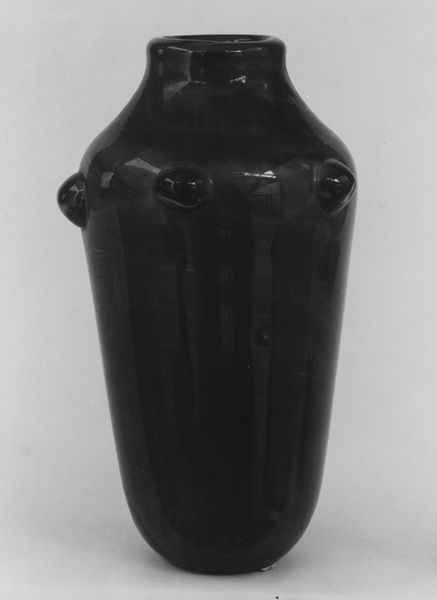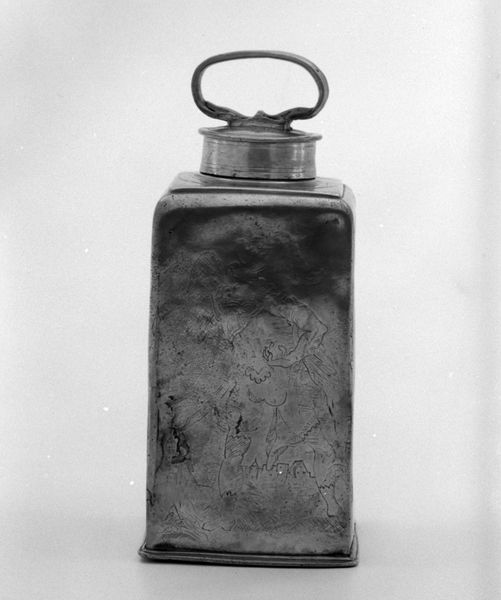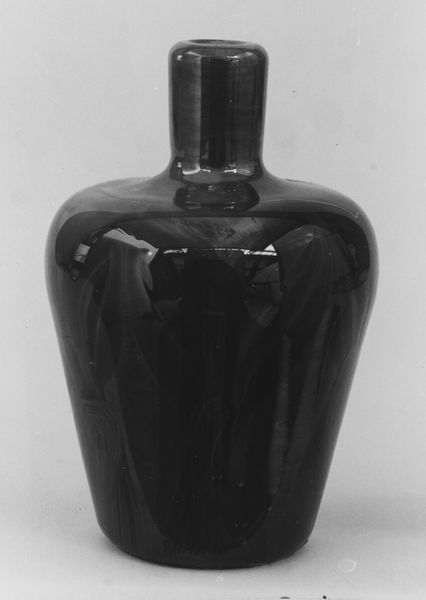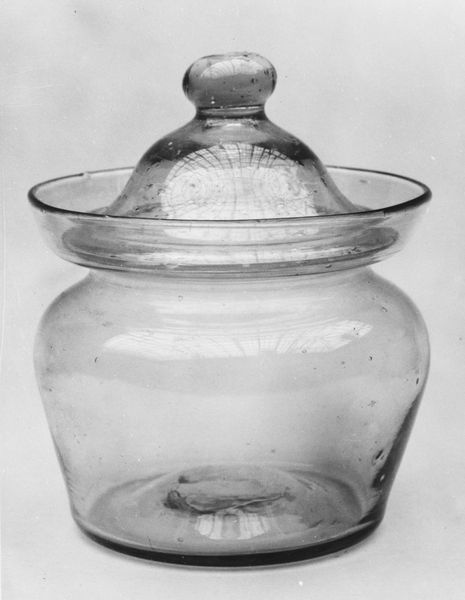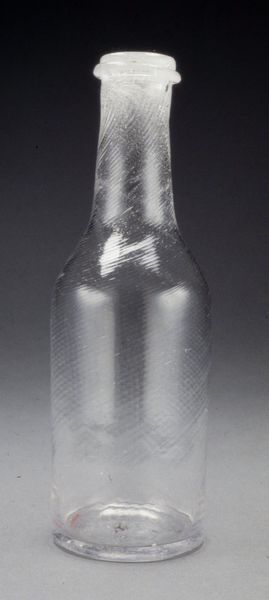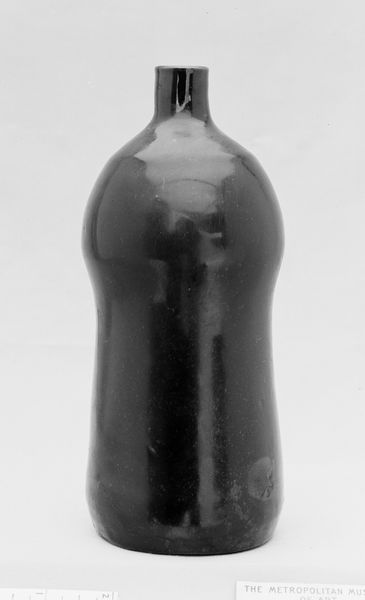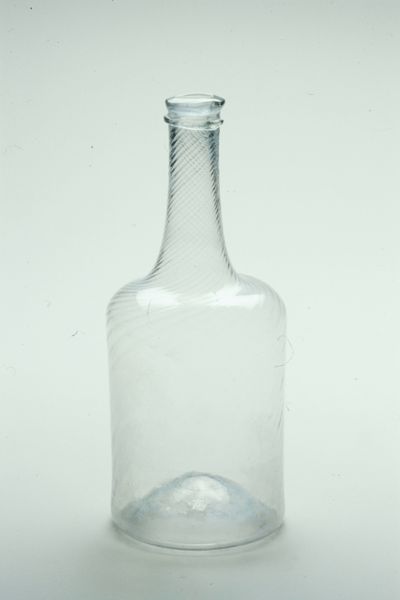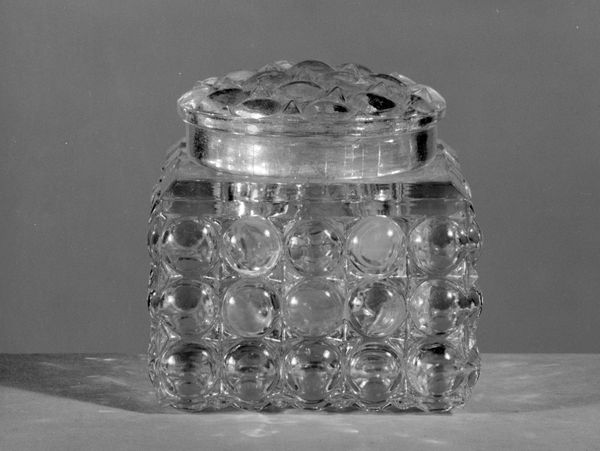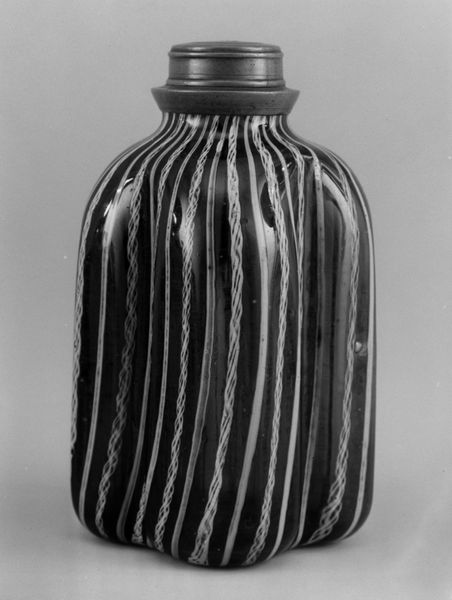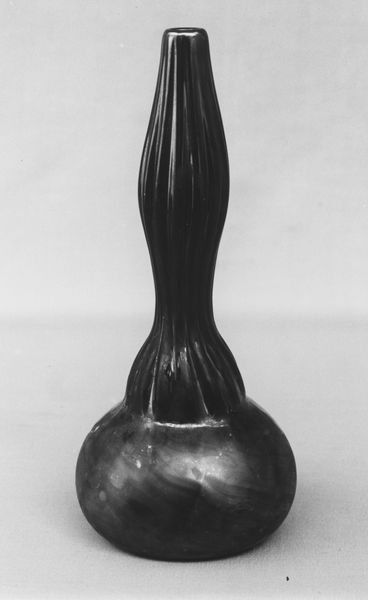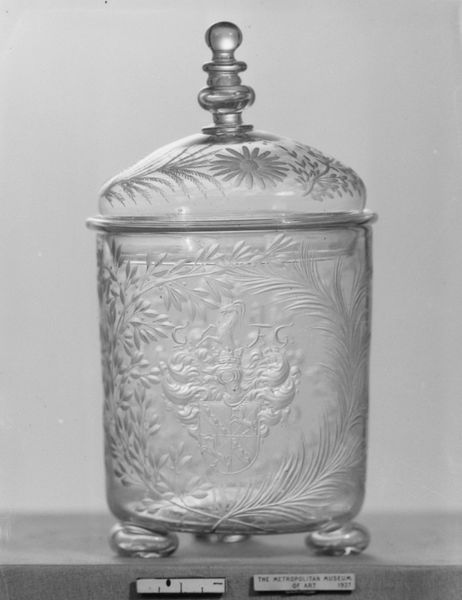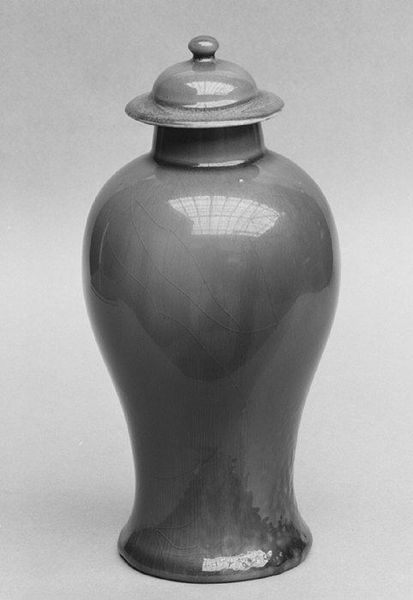
#
3d sculpting
#
3d printed part
#
close up shot
#
closeup shot
#
sculptural image
#
close-up shot
#
close-up
#
macro shot
#
macro
#
united-states
#
macro photography
Dimensions: H. 4 in. (10.2 cm)
Copyright: Public Domain
Curator: Here we have a "Salt Caster," produced by the New England Glass Company sometime between 1884 and 1893. It is currently held in the collection of the Metropolitan Museum of Art. Editor: My immediate thought is that this piece, even in monochrome, seems utilitarian yet subtly precious. The shape and material contrast makes me think about everyday luxury, or perhaps hidden worth. Curator: The design is so wonderfully understated. The cylindrical body swells just slightly, the top a metal cap with concentric rings, pierced with holes. Think of the rituals around salt: purification, preservation, flavoring. Each shake from those tiny holes carries a silent weight of cultural association. Editor: Exactly, but let's not forget the glass itself. It seems almost murky, full of imperfections which for me emphasize the material reality of its creation: the heat, the shaping, the slow cool down. Mass-produced, perhaps, but still bearing the marks of its making. And what about that cap? Was it always metal, or plated? The degradation alone tells a story of wear and use. Curator: A crucial point, considering the salt itself would have affected it. Consider the placement on the table, a subtle indication of status, controlling not just flavor but almost like manipulating destiny itself, especially in its heyday, which speaks volumes about American materialism in the late 19th century. Editor: Well said. The New England Glass Company, being a larger producer of this type of items would have played an essential role for the development of such commodities for middle-class families during the time. Curator: In observing these pieces, we engage with tangible connections to domestic spaces long since gone. They carry forward emotional traces from previous owners as a type of time capsule from the past. Editor: Agreed. And the simple act of reconsidering these objects—the "stuff" of everyday life—reveals forgotten narratives, both practical and precious.
Comments
No comments
Be the first to comment and join the conversation on the ultimate creative platform.

